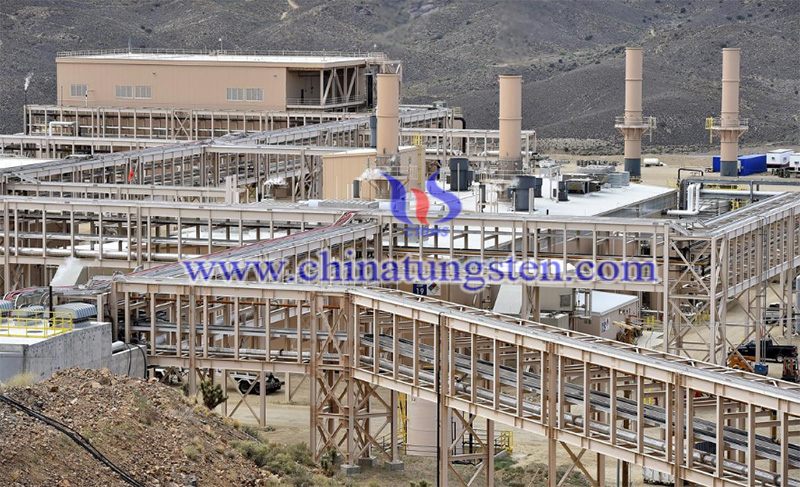US Wants to Get Rid of Its China's Rare Earth Dependency
- Details
- Category: Tungsten's News
- Published on Thursday, 06 August 2020 22:32
The US Department of Defense has just promised to provide funding for two rare earth separation plants. It's one small step towards the Trump administration's stated goal of breaking the country's dependence on China's supplies of critical minerals. But the direct involvement of the Pentagon underlines the scale of the task associated with creating from scratch a non-Chinese supply chain.
Last year, the United States relied almost entirely on imports of compounds and rare metals. According to the United States Geological Survey (USGS), China remains the largest supplier of rare metals, providing about 80% of all imports.
The United States currently produces rare earths at the Mountain Pass mine in California. The mine was acquired by MP Materials in 2017 after filing for bankruptcy. The latter is an investment vehicle supported by US funds JHL Capital Group and QVT Financial.

According to the United States Geological Survey (USGS), the mine produced 26,000 tons of light rare earth oxides last year, accounting for 12% of global production. Chinese dominance of the first stage of the global chain is weakening, partly due to the return of Mountain Pass and partly due to a displacement of highly-polluting heavy rare earths mining from China to Myanmar, which last year produced 22,000 tonnes of concentrate
However, except Australia's Lynas Corp (LYC.AX), almost all processing capacity in the world is under Chinese control. What's currently mined at Mountain Pass gets shipped to China to be upgraded into compounds and products which are then shipped back to the United States.
MP Materials is one of three companies selected to receive direct government funding to build a separation plant, but the funding was approved after a review of its Chinese shareholder Shenghe Resources. Lynas, meanwhile, is teaming up with Texas-based Blue Line on a heavy rare earths separation plant.
The United States basically does not have the capacity to produce neodymium iron boron magnets. This is the most common end use of rare earths. As the global automotive industry shifts to the production of electric vehicles, the application of neodymium magnets is expected to grow exponentially.
According to Le Roux, the establishment of a complete industrial chain from minerals to neodymium magnets requires the support of customers and the government. The power of the market is the reason for the closure of MP and the withdrawal of the US from the rare earth industry.
The role of market forces is very unfavorable for the reconstruction of domestic production capacity in the United States. Auto companies often choose lower-priced Chinese neodymium magnets instead of higher-priced emerging European and American peers based on interest and cost considerations.
Le Roux said that the key takeaway is that the Japanese have a different approach to the supply chain - they put a higher value on the stability of supply.
Le Roux pointed out that the important revelation of this experience is that Japan "adopts a different approach to the supply chain - they pay more attention to supply stability." The United States is still trying to catch up, and the US Department of Defense is authorized to directly invest in the separation of rare earth production capacity.
The United States is also learning that it's going to need allies if it is to regain some control of the rare earths sector. "I think it is clear at this stage that if you want to build a supply chain outside China, there will have to be cooperation between countries," said Ian Higgins, managing director of UK neodymium producer Less Common Metals, also talking to Argus. It's clear that if it is it going to fill its domestic magnet-making void it will need Japanese help.
The US has been busy building potential alliances with both Australia and Canada across a range of rare minerals to break its China's rare earth dependency. It's pretty clear that if it is it going to fill its domestic magnet-making void it will need Japanese help.
- Rare Earth Manufacturer & Supplier, Chinatungsten Online: www.chinatungsten.com
- Tungsten News & Prices of China Tungsten Industry Association: www.ctia.com.cn
- Molybdenum News & Price: news.molybdenum.com.cn
- Tel.: 86 592 5129696; Fax: 86 592 5129797; Email: sales@chinatungsten.com



 sales@chinatungsten.com
sales@chinatungsten.com